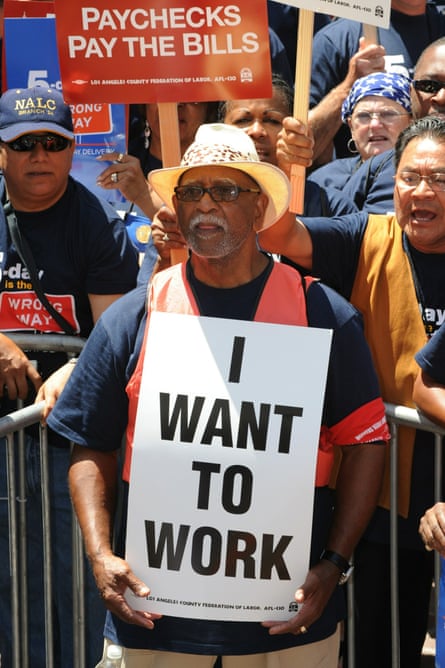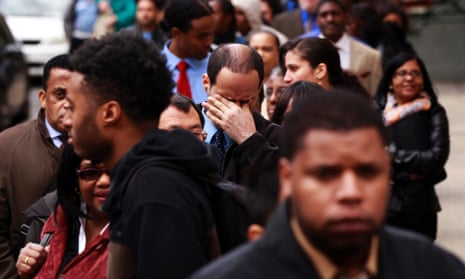America is filled with millions of ghosts: living, breathing human beings, who, for economic purposes, are completely unaccounted for and totally invisible.
A new report suggests that the long-term unemployed – those who have been out of a job for six months or more – are having no effect on the labor market, either good or bad. Their unfortunate unemployment situation “exert[s] little pressure on wage growth or inflation”, reports the Brookings Institute.
That's an enormous number of people without any kind of financial footprint. The number of those who have been out of work at least six months is currently 3.8 million, according to the US Department of Labor. That’s about one million less than last year, but still higher than is historically normal.
There's no easy way out, either. When Brookings checked in with those who had been unemployed for more than six months, now 15 months after their initial bout of unemployment, a third weren’t working and had given up their search. Another 30% were still looking.
Only one in 10 of those out of a job for longer than six months found full-time employment, found Brookings. For another 11% of the long-term unemployed, employment was sporadic.
If the long-term unemployed are not having an impact on major economic markers, it makes it less likely that Washington will feel any urge to create new policy responses. Republicans in Congress already oppose extending unemployment benefits to those who have been out of work for a long time.
That means the long-term unemployed will find that their troubles are unlikely to go away after they find a new job – which are often temporary, sporadic and part-time. In fact, only one in 10 is likely to find stable employment down the road.
"We have a huge problem of long-term unemployment. People have been out of work for at least six months, millions of them," says Justin Wolfers, senior fellow in economics at Brookings.
A series of questions remains for economists: What happens to the long-term employed? Will they ever find a job again? Have they lost hope?
‘27 weeks and over’
The Department of Labor measures duration of unemployment in weeks, ending with a vague category of "27 weeks and over", as if after six months of unemployment the unemployed weren’t worth measuring anymore. Yet not all long-term unemployed fall into a pit of despair.
Six months is a long time to go without a job. What's more, job searching in today's economy can be a soul-crushing process. As days pass, with resumes going out and no calls or responses coming in, job-hunters say it can be difficult to remain motivated, to keep sending out those resumes, to sound excited about a job prospect.

Often the brief respite from long-term unemployment comes in form of part-time, poverty-wage jobs. Those, too, can be sporadic, often resulting in pay that barely covers basic bills.
Who are the long-term unemployed?
At 40%, millennials are currently facing the highest long-term unemployment of all age groups. Their entrance to job market has been rocky. Many still live with their parents and are saddled with college debt. Just one in 10 describe their job as a "career". In 2013, the underemployment rate for college graduates was 18.3%, as compared to 9.9% in 2007, according to Economic Policy Institute. Most can’t afford to be picky about jobs right now. After all, many reason, their college loans aren’t going to pay themselves and a small paycheck is better than no paycheck.
There might be an upside, however, to getting that expensive education. Brookings found that those who had an associate’s degree or bachelor degree or higher were more likely to be employed.
Also, more likely to be employed were those who were married, according to Brookings.
Fully 44% of the long-term unemployed were never married, while nearly 20% are either widowed, separated or divorced.”
If there ever was a motivation to find a job, having a hungry family at home was it.
Unemployed and forgotten
Well before the Brookings report described the statistics, the US Congress took steps to back away from the long-term unemployed, reasoning that unemployment benefits were an unnecessary cost to the government. In December, long-term unemployment benefits expired without being renewed. In the months since, lawmakers have unsuccessfully struggled to come up with a compromise. And while Senators Jack Reed and Dean Heller came up with a proposal that Senate voted to open up for a debate earlier today, the Republican-held House still remains an obstacle.
Earlier this week, speaker of the House John Boehner said he will only consider the bill if it comes with provisions “that would actually help the economy and help people get back to work”. He then said: "Those conditions have not been met."

Comments (…)
Sign in or create your Guardian account to join the discussion